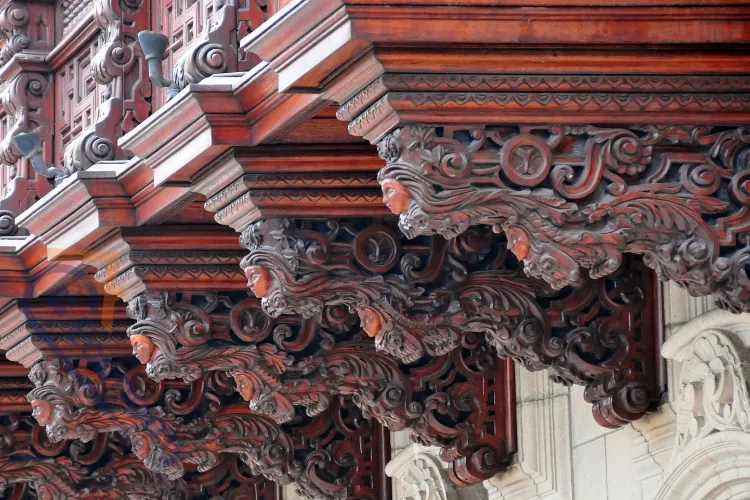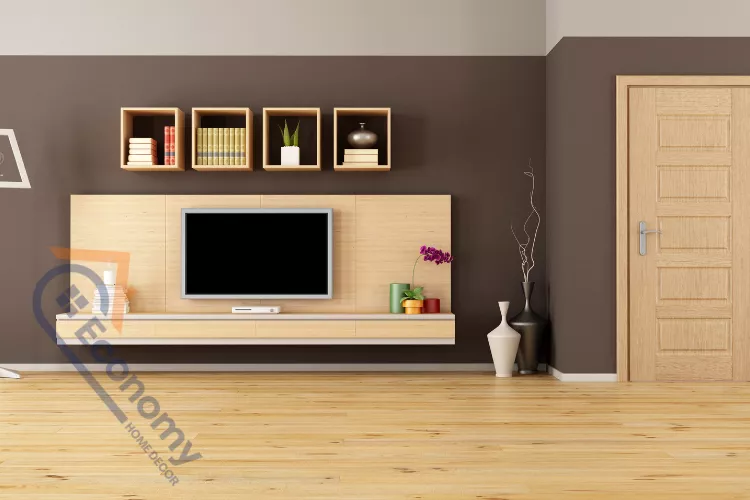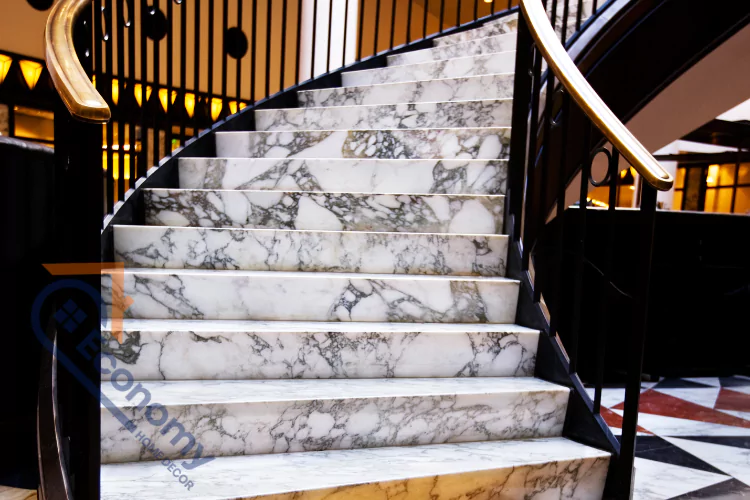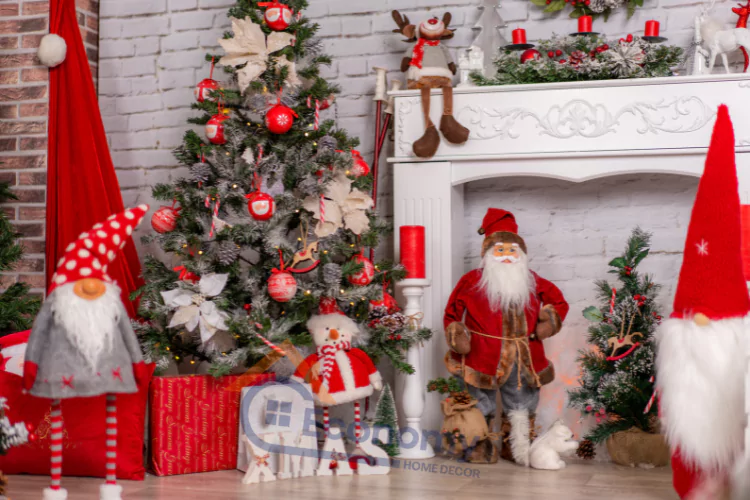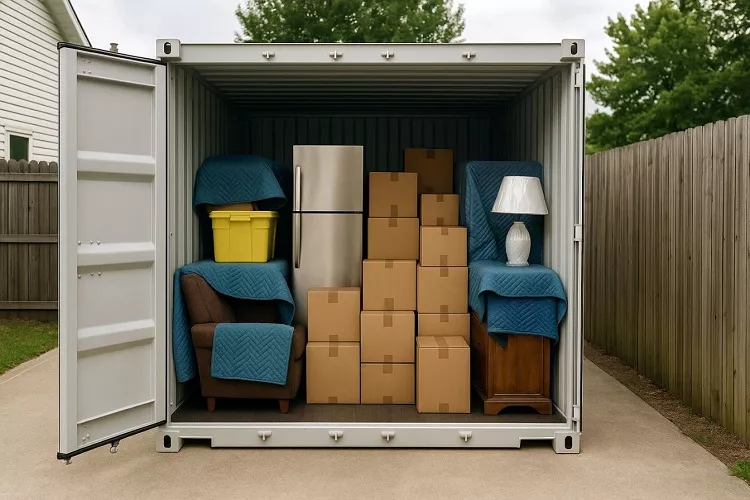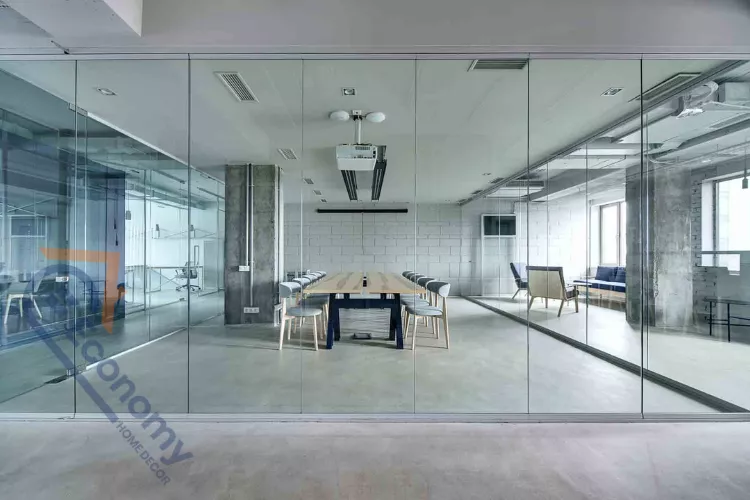Have you ever walked into a room and noticed those beautiful architectural pieces that seem to add instant character and charm? Chances are, you were admiring decorative corbels. These versatile design elements have been transforming ordinary spaces into extraordinary ones for centuries, and they’re making a huge comeback in modern home decor. Whether you’re a seasoned decorator or just starting to explore ways to enhance your living space, corbel decor ideas can breathe new life into your walls, shelves, and architectural features.
Key Takeaways
- Decorative corbels add architectural interest and visual depth to any room
- Corbels work beautifully both indoors and outdoors
- You can use corbels for functional shelving or purely decorative purposes
- Different materials like wood, metal, and foam offer unique aesthetic options
- Corbels come in various styles from rustic farmhouse to elegant traditional
What Are Decorative Corbels and Why Use Them?
Decorative corbels are architectural brackets that project from walls to support shelves, mantels, or other structures. Originally designed for structural purposes in ancient buildings, today’s decorative corbel pieces serve both functional and aesthetic roles in interior design. Think of them as the jewelry of your home’s architecture – they add that finishing touch that makes everything look intentionally designed and thoughtfully curated.
The beauty of decorating with corbels lies in their versatility. You can find decorative wood corbels that bring warmth and natural texture, decorative metal corbels for an industrial edge, or even decorative foam corbels that are lightweight and easy to install. The options are truly endless, making it simple to find the perfect match for your design style and budget.
What makes corbels decorative particularly appealing is their ability to transform plain walls into focal points. A simple floating shelf becomes a statement piece when supported by ornate corbels. A plain doorway gains architectural significance with the addition of decorative corbels in doorways. This simple addition can make your home feel more expensive and well-designed without requiring a major renovation or massive investment.
1. Create Stunning Floating Shelves with Decorative Wood Corbels
One of the most popular corbel decorating ideas involves creating beautiful floating shelves throughout your home. Decorative wood corbel supports give the illusion that your shelves are magically suspended while providing the structural support needed to hold books, plants, or decorative objects. This approach works wonderfully in living rooms, home offices, bedrooms, and bathrooms.
When selecting decorative corbels for shelves, consider the weight of items you plan to display. Heavier items like book collections require sturdy decorative wooden corbels made from solid hardwood. For lighter decorative displays, you might choose more ornate or delicate designs that prioritize aesthetics over heavy-duty support.
The installation process is straightforward, making this an excellent weekend DIY project. Choose corbels that complement your shelf’s finish and your room’s overall style. For a cohesive farmhouse look, pair reclaimed wood shelves with rustic decorative wood corbels. If you prefer a more refined aesthetic, opt for painted corbels in white or your wall color to create a seamless, built-in appearance.
Pro tip: Space your corbels approximately 24 to 36 inches apart for optimal support and visual balance. This ensures your decorative corbel shelves remain sturdy while maintaining an attractive appearance that doesn’t look overcrowded.
2. Enhance Your Kitchen with Decorative Corbels for Kitchen Island
The kitchen is the heart of the home, and adding decorative corbels for kitchen island countertops can significantly elevate this important space. These architectural elements transform a basic kitchen island into a furniture-quality centerpiece that becomes a conversation starter during gatherings. Kitchen islands with corbel detailing feel more custom and high-end, similar to pieces you’d find in luxury homes or design magazines.
Decorative corbels for granite countertops serve a dual purpose in the kitchen. They provide essential support for overhanging countertops while adding visual interest to what might otherwise be a plain structural element. This is especially important for breakfast bar areas where people gather to eat casual meals or chat while cooking.
When choosing corbels for your kitchen, consider matching them to your cabinet style and finish. If you have traditional raised-panel cabinets, ornate decorative corbels and brackets with carved details will complement the existing woodwork beautifully. For modern kitchens with clean lines, simpler decorative corbel brackets with minimal ornamentation maintain the contemporary aesthetic while still adding architectural interest.
The color coordination is equally important. Stained wood corbels should match or complement your cabinet stain, while painted options can either blend seamlessly with your cabinetry or provide a contrasting accent color that ties into other elements like your backsplash or hardware.
3. Add Character to Exterior Spaces with Decorative Outdoor Corbels
Don’t limit your corbel decor to interior spaces! Decorative exterior corbels dramatically enhance your home’s curb appeal and architectural character. These outdoor elements work beautifully on porches, under eaves, supporting porch roofs, or framing garage doors. Decorative porch corbels particularly shine when paired with columns or posts, creating a cohesive architectural statement that welcomes guests before they even step inside.
When selecting decorative corbels exterior pieces, material choice becomes crucial. Exterior decorative corbels must withstand weather conditions including rain, snow, sun exposure, and temperature fluctuations. Look for corbels made from weather-resistant materials like treated wood, PVC, polyurethane, or metal with appropriate finishes. Decorative gable corbels specifically designed for outdoor use often feature protective coatings that prevent rot, warping, and fading.
Installation of decorative outdoor corbels requires proper sealing and waterproofing to ensure longevity. Apply exterior-grade sealant or paint to wood corbels before installation, and use weatherproof construction adhesive and stainless steel screws to secure them firmly. This extra attention to installation details ensures your exterior decorative corbels remain beautiful and structurally sound for years to come.
Consider the scale of your home when choosing outdoor corbels. Larger homes with substantial porches can handle bigger, more dramatic corbel designs, while smaller cottages look best with proportionally smaller, delicate corbels that don’t overwhelm the architecture.
4. Frame Doorways and Windows with Decorative Corbels Interior Design Elements
Using decorative corbels in doorways creates instant architectural drama and defines spaces within open floor plans. This decorating with corbels idea works particularly well in homes with arched doorways or when you want to add visual interest to standard rectangular openings. The corbels act as decorative capitals that draw the eye upward, making ceilings appear higher and rooms feel more spacious.
Interior wall corbels decorative pieces positioned on either side of a doorway frame the opening beautifully, creating a sense of importance and formality. This technique works especially well for dining room entrances, home office doorways, or master bedroom entries where you want to establish a sense of transition from one space to another.
Window treatments also benefit from corbel embellishments. Mount decorative wall corbels above windows as supports for curtain rods or wooden valances. This approach adds depth and dimension to your window treatments while solving the practical challenge of how to hang heavier drapery fabrics. The corbels provide sturdy mounting points while contributing to the overall design aesthetic.
For a cohesive look throughout your home, choose corbels in similar styles and finishes for all doorway and window treatments. This creates a unified architectural vocabulary that ties different rooms together, making your home feel thoughtfully designed and professionally decorated.
Corbel Style Comparison Table
| Corbel Style | Best For | Material Options | Design Aesthetic | Price Range |
|---|---|---|---|---|
| Traditional Carved | Formal dining rooms, libraries | Wood, plaster | Classic, elegant | $$-$$$ |
| Rustic Farmhouse | Kitchens, living rooms | Reclaimed wood | Casual, warm | $-$$ |
| Modern Minimalist | Contemporary spaces | Metal, painted wood | Clean lines, simple | $$-$$$ |
| Ornate Victorian | Historic homes, formal spaces | Wood, decorative plaster corbels | Detailed, elaborate | $$$-$$$$ |
| Industrial | Lofts, modern kitchens | Decorative iron corbels, decorative steel corbels | Raw, edgy | $$-$$$ |
| Craftsman | Bungalows, mission-style homes | Oak, mahogany | Arts & crafts | $$-$$$ |
5. Make a Statement with Decorative Fireplace Corbels
The fireplace naturally serves as a room’s focal point, and adding decorative fireplace corbels takes this centerpiece to the next level. Corbels positioned beneath a fireplace mantel provide both structural support and visual weight, making the entire fireplace surround feel more substantial and impressive. This is one of the most impactful corbel decor ideas for living rooms and family rooms.
When working with fireplaces, consider the scale of your mantel and hearth. Larger fireplaces require more substantial corbels to maintain proper proportions, while smaller fireplaces look best with appropriately sized decorative corbels interior pieces that don’t overwhelm the space. The corbels should feel integrated into the overall fireplace design rather than appearing as afterthoughts.
Material selection for fireplace corbels depends on your mantel material and room style. If you have a wooden mantel, matching decorative wood corbel supports create a unified, built-in appearance. For stone or brick fireplaces, painted corbels in complementary colors tie the elements together while adding architectural detail that stone alone cannot provide.
The positioning is critical for both aesthetics and function. Mount corbels directly beneath the mantel where it meets the wall, ensuring they align vertically with any other corbels or architectural elements in the room. This attention to alignment creates a professional, intentional look that elevates your entire space.
6. Explore Unique Materials with Decorative Metal Corbels and Decorative Iron Corbels
Moving beyond traditional wood, decorative metal corbels offer a completely different aesthetic that works beautifully in industrial, modern farmhouse, and eclectic spaces. Decorative iron corbels bring a sense of history and craftsmanship, with their wrought or cast construction adding textural interest that complements both rustic and refined interiors. These pieces often feature scrollwork, geometric patterns, or nature-inspired designs that become artwork in their own right.
Decorative steel corbels provide a more contemporary option with clean lines and modern finishes. These work exceptionally well in kitchens with stainless steel appliances, home offices with metal desks, or anywhere you want to introduce an industrial edge. The durability of metal means these corbels can support significant weight, making them practical choices for heavy-duty applications like workshop shelving or garage storage that still looks stylish.
The finish options for metal corbels are extensive. You can find pieces in aged bronze, oil-rubbed bronze, brushed nickel, matte black, or even colorful powder-coated finishes. This variety allows you to coordinate decorative metal corbels with your existing hardware, light fixtures, and other metal accents throughout your home for a cohesive design scheme.
Installation tip: Metal corbels can be heavier than wood alternatives, so ensure you’re anchoring into wall studs or using appropriate heavy-duty anchors rated for the combined weight of the corbel and whatever it will support.
7. Decorating with Antique Corbels for Vintage Charm
Decorating with antique corbels brings authentic character and history into your home that reproduction pieces simply cannot match. Architectural salvage yards, antique shops, and online marketplaces offer genuine vintage corbels with patina, aged wood, original paint, and the unmistakable quality of hand-crafted construction. These pieces tell stories and add soul to your spaces in ways that mass-produced items cannot replicate.
The beauty of decorating with antique corbels lies in their imperfections. Weathered wood, chipped paint, and signs of age add depth and character that make your home feel collected over time rather than decorated in a single shopping trip. This approach aligns perfectly with current design trends that favor authenticity, sustainability, and unique pieces with history and meaning.
When incorporating antique corbels into your decor, you don’t necessarily need to use them functionally. Many designers use vintage corbels as sculptural elements – displayed on bookshelves, used as bookends, grouped on coffee tables, or mounted on walls as three-dimensional art. This decorating with corbels ideas approach celebrates their architectural beauty without requiring structural installation.
If you do choose to use antique corbels functionally, have them professionally assessed to ensure they’re still structurally sound. Age and previous use may have weakened the wood, so it’s better to err on the side of caution, especially if you plan to use them for weight-bearing applications like shelving.
8. Go Bold with Decorative Corbels and Brackets Combinations
Combining decorative corbels and brackets creates layered architectural interest that feels custom and high-end. This approach works particularly well for larger-scale installations like built-in bookcases, entertainment centers, or extensive kitchen shelving systems. The corbels provide primary support while coordinating brackets add visual rhythm and additional structural assistance.
When pairing decorative corbel brackets together, consistency in style and finish is essential. Choose pieces from the same manufacturer or product line to ensure proportions, details, and finishes match perfectly. Mixed metals or mismatched wood tones can look intentional if done carefully, but it’s easier to achieve a cohesive look with matching pieces, especially for beginners.
This layered approach also allows you to distribute weight more effectively. For particularly heavy shelving applications – like home libraries or display cases for heavy collectibles – using both corbels and brackets provides redundant support that ensures safety and prevents sagging over time. The decorative corbels for sale in specialty stores often come with matching bracket options specifically designed to work together.
The visual impact of combined corbels and brackets cannot be overstated. This technique adds depth, shadow, and dimension to what might otherwise be flat walls, creating architectural interest that makes your home feel more expensive and thoughtfully designed.
9. Budget-Friendly Options with Decorative Foam Corbels
Not everyone has the budget for solid wood or custom metalwork, and that’s where decorative foam corbels come to the rescue. Modern manufacturing has created incredibly realistic polyurethane and foam corbels that mimic the appearance of carved wood or plaster at a fraction of the cost. These lightweight alternatives make installation easier while still delivering impressive visual impact.
The advantages of decorative foam corbels extend beyond cost savings. Their lightweight nature means easier installation without requiring heavy-duty anchors or professional help. They won’t warp, crack, or split like wood, and they resist moisture damage, making them suitable for bathrooms, kitchens, and even decorative corbels exterior applications when properly sealed and painted.
For DIY enthusiasts, foam corbels offer incredible creative freedom. You can easily cut, shape, sand, and paint them to achieve custom looks without specialized woodworking tools or skills. This makes them perfect for weekend projects and experimental design ideas where you want to test a concept before committing to more expensive materials.
Quality varies significantly among foam and polyurethane corbels, so examine products carefully before purchasing. Higher-quality pieces feature sharper details, better molding, and more realistic textures that closely mimic traditional materials. When properly painted and installed, these decorative corbels for sale at home improvement stores can fool even discerning eyes.
10. Creative Display Ideas: Decor Steals Corbel Shelf and Decor Steals Corbels Inspiration
The popular home decor retailer Decor Steals has popularized the use of corbel wall decor as standalone decorative elements. Their decor steals corbel shelf concept transforms single corbels into charming small shelves perfect for displaying tiny plants, candles, or collectibles. This decorating with corbels ideas approach requires minimal commitment and investment while delivering maximum charm.
A single decor steals corbels piece mounted on a wall becomes sculptural art that adds dimension and interest. Group several corbels of varying sizes and styles for an eclectic gallery wall effect, or use matching corbels in a symmetrical arrangement for a more formal appearance. This approach works beautifully in entryways, powder rooms, or any space where you want impact without overwhelming the area.
The corbel wall decor trend also includes using corbels as plant holders, with small succulents or air plants nestled into carved details or placed on top of wall-mounted corbels. This brings life and greenery into your space while showcasing the architectural beauty of the corbels themselves. It’s a creative solution for plant display that doesn’t require floor or shelf space.
For seasonal decorating, corbels provide perfect perches for holiday greenery, small pumpkins, miniature holiday villages, or other festive decorations. Their architectural presence elevates seasonal decor from temporary to intentional, making your holiday decorating feel more sophisticated and thoughtfully executed.
Choosing the Right Corbel for Your Space
Selecting the perfect corbel requires considering several factors beyond just appearance. First, assess the load-bearing requirements. Are you using the corbel purely decoratively, or does it need to support substantial weight? This determines whether you can use lightweight decorative foam corbels or need solid wood or metal options.
Style consistency throughout your home creates a cohesive design narrative. If your home features traditional architectural details, choose corbels that echo those elements – carved details, classical proportions, and traditional materials. Modern homes benefit from simpler corbel designs with clean lines and minimal ornamentation. Don’t fight your home’s existing architectural style; instead, choose corbels that complement and enhance it.
Scale and proportion are crucial considerations that many DIYers overlook. A corbel should be substantial enough to look intentional but not so large that it overwhelms the space or the shelf it supports. As a general rule, corbels should be approximately two-thirds the depth of the shelf they support. For purely decorative applications without shelves, consider the wall space and surrounding elements to determine appropriate sizing.
Budget certainly plays a role in your selection. Decorative corbels for sale range from under $10 for basic foam options to several hundred dollars for custom carved wood or antique pieces. Determine your budget early and shop accordingly, remembering that strategic placement of fewer high-quality corbels often creates more impact than numerous cheap options scattered throughout your home.
Installation Tips for Decorative Corbels Interior and Exterior Applications
Proper installation ensures your corbels remain beautiful and functional for years to come. Always begin by locating wall studs using a stud finder, as secure mounting requires anchoring into solid framing rather than just drywall. For applications involving significant weight like decorative corbels for granite countertops, stud mounting is absolutely essential.
Mark your desired corbel positions carefully, using a level to ensure perfect alignment. Nothing looks more amateurish than crooked corbels, so take time to measure twice and drill once. For paired corbels flanking doorways or supporting shelves, measure from the same reference point for both to ensure they’re perfectly level with each other.
Use appropriate fasteners for your corbel material and application. Wood corbels typically install with wood screws long enough to penetrate wall studs by at least 1.5 inches. Metal corbels may require pilot holes to prevent splitting. For decorative corbels exterior installations, use stainless steel or coated screws that resist rust and corrosion.
Before final installation, consider finishing details. Will you paint or stain the corbels? Should they be sealed for moisture protection? Complete these finishing steps before mounting, as it’s much easier to achieve professional results when working with uninstalled pieces. For decorative exterior corbels, apply appropriate exterior-grade finishes and sealants before installation.
Maintenance and Care for Your Decorative Corbels
Keeping your corbels looking their best requires minimal but consistent care. Dust decorative corbels interior pieces regularly using a soft cloth or duster, paying attention to carved details where dust accumulates. For deeper cleaning, use a slightly damp cloth with mild soap, taking care not to saturate wood corbels or get metal pieces too wet.
Wood corbels benefit from periodic conditioning, especially in dry climates where wood can crack or split. Apply furniture polish or wood conditioner following the product manufacturer’s recommendations. This maintains the wood’s moisture content and enhances its natural beauty while protecting the finish.
Inspect exterior decorative corbels seasonally for signs of weather damage, loose fasteners, or finish deterioration. Touch up paint or stain as needed to prevent water penetration that can cause rot or rust. Check that all mounting hardware remains tight and secure, especially after extreme weather events or temperature swings that can cause wood expansion and contraction.
For antique corbels, preservation takes priority over heavy cleaning. Gentle dusting usually suffices, with minimal intervention to preserve the patina and character that make these pieces special. Avoid harsh chemicals or aggressive cleaning that might damage original finishes or aged wood.
Conclusion
Decorative corbels offer endless possibilities for transforming your home’s appearance with relatively minimal investment and effort. From decorative corbels for shelves that combine function with beauty, to decorative corbels exterior applications that boost curb appeal, these versatile architectural elements deserve consideration in any decorating plan. Whether you choose traditional decorative wood corbels, industrial decorative metal corbels, or budget-friendly decorative foam corbels, you’re adding timeless architectural interest that elevates your entire space.
The beauty of decorating with corbels ideas lies in their flexibility. You can start small with a single corbel wall decor piece to test the style in your home, or commit to a comprehensive installation with decorative corbels for kitchen island and decorative corbels in doorways throughout your space. There’s no single right way to incorporate these charming architectural elements – only ways that work for your style, budget, and vision.
As you explore corbel decorating ideas, remember that the best designs feel authentic to your home’s architecture and your personal aesthetic. Don’t force a style that doesn’t resonate with you just because it’s trendy. Instead, choose corbels decorative pieces that genuinely enhance your space and bring you joy every time you see them. That’s when decorative corbel elements truly transform a house into a beautifully designed home.
Frequently Asked Questions
What is the purpose of decorative corbels?
Decorative corbels serve both functional and aesthetic purposes. Functionally, they provide support for shelves, countertops, mantels, and other structures projecting from walls. Aesthetically, they add architectural interest, create visual depth, and enhance the overall design character of a space. Many people use decorative corbel pieces purely for ornamentation without any weight-bearing requirements.
Can I use decorative wood corbels outdoors?
Yes, but you must choose corbels specifically designed for exterior use or properly treat standard wood corbels for outdoor applications. Look for decorative outdoor corbels made from weather-resistant materials like treated wood, cedar, or synthetic materials. Apply exterior-grade sealant or paint to protect against moisture, UV damage, and temperature fluctuations. Regular maintenance ensures outdoor corbels remain beautiful and structurally sound.
How do I choose the right size corbel for my project?
The corbel size depends on your application. For shelves, corbels should be approximately two-thirds the shelf depth. For countertop support like decorative corbels for granite countertops, choose corbels that provide adequate support for the overhang – typically 10-12 inches for standard breakfast bar heights. Consider the visual weight too; larger rooms and heavier architectural features require more substantial corbels to maintain proper proportions.
Are decorative foam corbels as strong as wood ones?
Decorative foam corbels are not designed for heavy load-bearing applications like solid wood or metal options. They work beautifully for lightweight decorative displays, small shelves with minimal weight, or purely ornamental applications. For heavy-duty support like kitchen islands or substantial shelving, choose solid decorative wood corbels or decorative metal corbels instead.
Where can I find decorative corbels for sale?
Decorative corbels for sale are available at home improvement stores, specialty architectural salvage shops, online retailers, antique stores, and furniture stores. Websites like Decor Steals, Wayfair, Amazon, and specialized architectural element retailers offer extensive selections. For unique pieces, check local salvage yards or antique shops where you might find one-of-a-kind vintage corbels with character and history.
Can I paint decorative corbels to match my decor?
Absolutely! Painting corbels is an excellent way to customize them to your space. Use appropriate primers and paints for your corbel material – wood, metal, or foam each require specific products. Many people paint decorative corbels interior pieces to match trim work for a built-in appearance, or use contrasting colors to make corbels stand out as decorative accents. Sand lightly, prime properly, and apply thin coats for professional-looking results.

